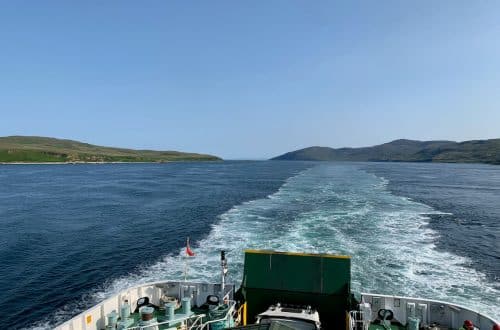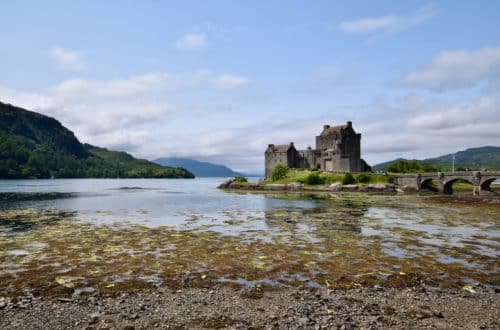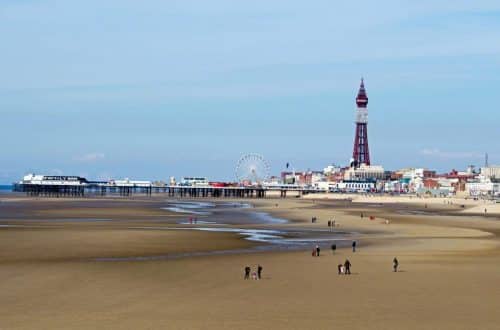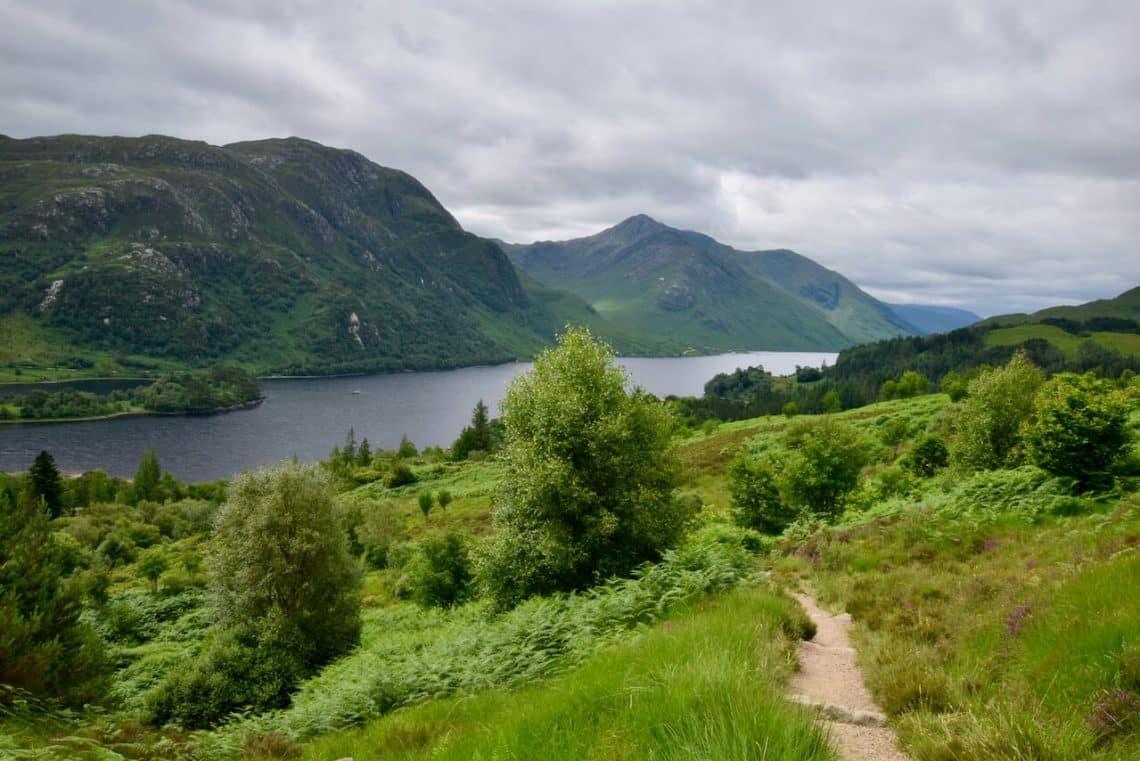
Explore the Scottish Highlands: Things to do in the Great Glen
The Great Glen is one of the highlights of the Scottish Highlands. This 80 mile (130km) valley cuts diagonally across Scotland from coast to coast, from Inverness in the northeast to Glencoe and Fort William in the southwest. A popular place to stay, within the Great Glen are plenty of sights to make your trip to Scotland truly magical.
- How was the Great Glen formed?
- Loch Ness
- Drumnadrochit
- Inverness
- Glen Affric
- Urquhart Castle
- Highland Folk Museum
- Highland Wildlife Park
- Fort William/Neptune’s Staircase
- Ben Nevis/cable car
- Glenfinnan Viaduct
- Glencoe
- The Great Glen Way
- How to get to the Great Glen
- Where to stay in the Great Glen
- Where to eat in the Scottish Highlands
- Services in the Scottish Highlands
- Map of the Great Glen
How was the Great Glen formed?
The Great Glen is in fact a geological fault line running almost exactly northeast to southwest across the country. Along this fault, two plates of the earth’s crust move parallel to each other, and this natural breaking point has created a series of natural lochs and glens which are the highlight of this region.
Loch Dochfour, Loch Ness, Loch Oich, Loch Lochy and Loch Linnhe are connected naturally by rivers, but these are not big enough to be navigable. In the early 19th century, therefore, the Caledonian Canal was created to link the lochs together and provide a route between the east and west coasts of Scotland that avoids a detour around the treacherous far north of the country.
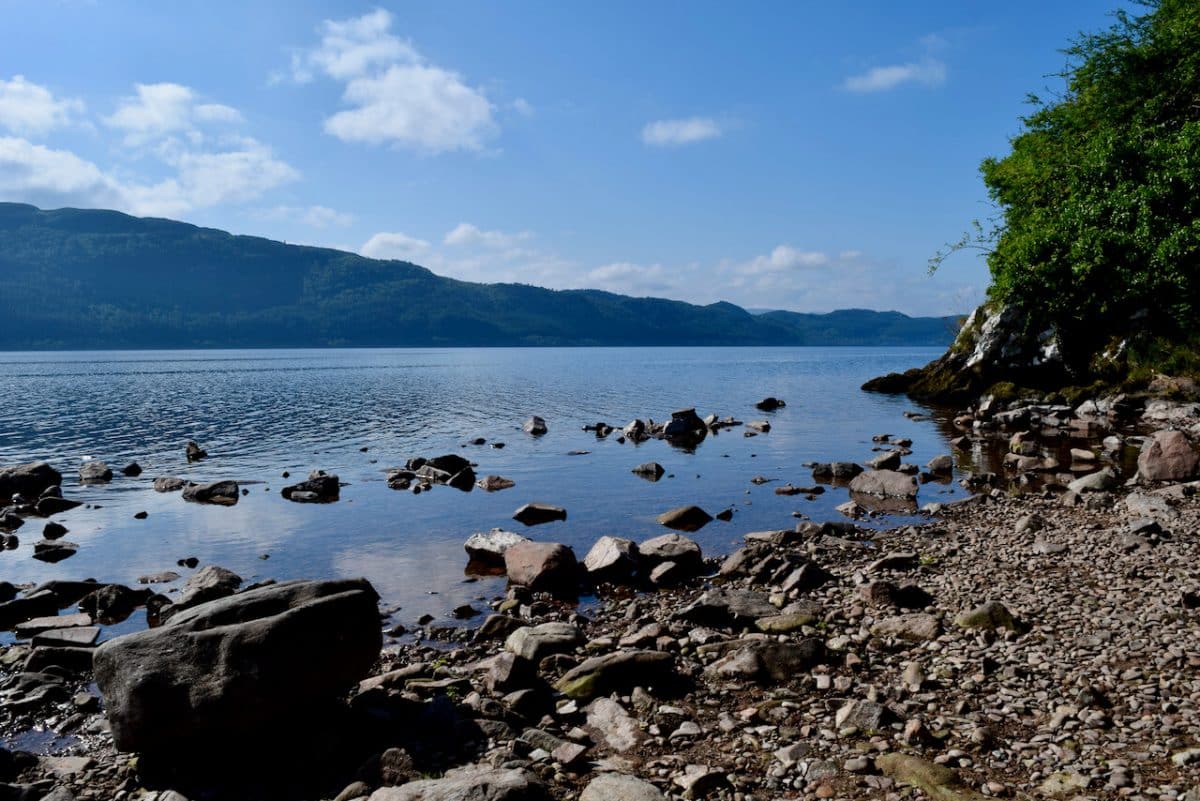
Loch Ness
Undoubtedly the most famous of the Great Glen’s lochs, Loch Ness stretches for some 23 miles across the glen. A road runs along the northern bank of the loch, providing spectacular views.
The legendary home of the Loch Ness Monster, the area has capitalised on this reputation, and Nessie-seeking tourists are well catered for. But the loch is so much more than it’s fictional inhabitant; with spectacular waterfalls and historic castles, get out on the water to really appreciate its splendour.
Loch Ness boat trips
Trips on the loch start from either Fort Augustus at its southwest point, or Drumnadrochit, some 2/3 of the way up the northern shoreline. Choose between a leisurely cruise, a thrill-seeking high speed trip, or a family day out looking for the Loch Ness Monster on a trip that will teach you more about the legend and the scientists who have tried to prove its existence.
Drumnadrochit
The large village of Drumnadrochit is the tourist hub of Loch Ness, with campsites, hostels and B&Bs. In the village you will also find Nessieland, a kid-friendly museum combining the history of Loch Ness itself as well as everything you could possibly want to know about its famous namesake!
Drumnadrochit can be very busy and tourist-centric in the summer months; if you are looking for a more peaceful visit to the Great Glen, consider staying elsewhere.

Inverness
The northernmost city in the United Kingdom, Inverness feels remote. But it is the cosmopolitan heart of the region, with a university, plentiful shopping and dining, and easy access to some of the highlights of Northern Scotland.
Check out the castle and cathedral, or take a stroll along the river Ness to the botanic gardens. For a day out, head down to Loch Ness or east to Culloden Battlefield to learn more about the embattled history of the Highlands.
Inverness is also a great place to stock up on essentials, as it is the main location in the highlands where you will find all the big stores and supermarkets.
Glen Affric
Running due west from Loch Ness’s northern shore, Glen Affric is a peaceful and picturesque place to spend a day in the great outdoors. There is plenty of great walking here https://www.walkhighlands.co.uk/lochness/glenaffric.shtml; most of the glen is under the protection of the Forestry Commission, and the northern side of Glen Affric is home to eight Munro summits for more serious hillwalkers.
For a gentler day out, head to Plodda Falls, where a 2 mile walk takes you through beautiful forest to one of the region’s most spectacular waterfalls.

Urquhart Castle
Located on the northern bank of Loch Ness close to Drumnadrochit, Urquhart Castle is one of the most visited in Scotland due to its location and spectacular position on the shores of the loch.
Over 1000 years old, Urquhart Castle was in the thick of the action during the Scottish Wars of Independence in the 14th and 15th centuries, before being destroyed during the Jacobite rebellion in the 18th century. But there is still plenty of castle left to explore, accompanied by a very good audio guide and plentiful signage explaining the different parts of the castle and their functions.
Don’t miss the walk down to the water’s edge for beautiful shots of Loch Ness from beach level!
Highland Folk Museum
Located to the south of Loch Ness in the village of Newtonmore, the Highland Folk Museum https://www.highlifehighland.com/highlandfolkmuseum/ gives a glimpse into life in the area in times gone by.
Check out the historic buildings and interact with staff in historical costume as they explain how people lived and worked in the Highlands in the past. A highlight is the 1700s township, where low thatched cottages and smokehouses demonstrate how tough life was in this period, and how far the Highlands have come in the centuries since.
The Highland Folk Museum is approximately 1 hour’s drive from both Inverness and Fort William.
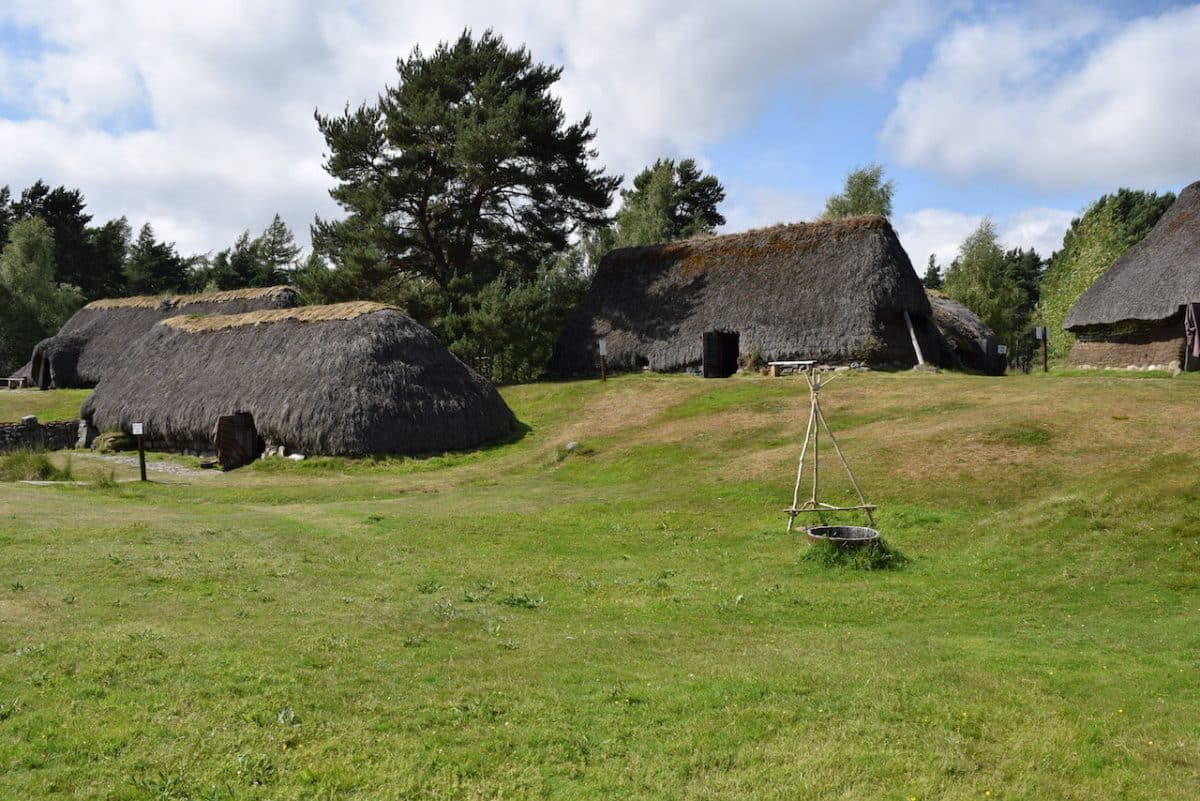
Highland Wildlife Park
Located just a few miles from the Highland Folk Museum, the Highland Wildlife Park https://www.highlandwildlifepark.org.uk/ is a 105-acre site owned by the same company as the Edinburgh Zoo.
A mixture of zoo and safari park, the Highland Wildlife Park is home to many native Highland animals and birds, as well as species from mountainous regions around the world, including Amur tigers and snow leopards.
Fort William/Neptune’s Staircase
The commercial and tourist hub of the Great Glen, Fort William is a bustling resort town that you are guaranteed to pass through at some point in your stay.
While in town, admire the views (on a clear day) of nearby Ben Nevis, Britain’s highest mountain which towers over the town. And don’t miss Neptune’s Staircase, a series of 8 locks in a “staircase” which takes 90 minutes to navigate. The locks carry boats up a height of 19 metres, from Loch Lochy in the south to join the Caledonian Canal onwards to Inverness.
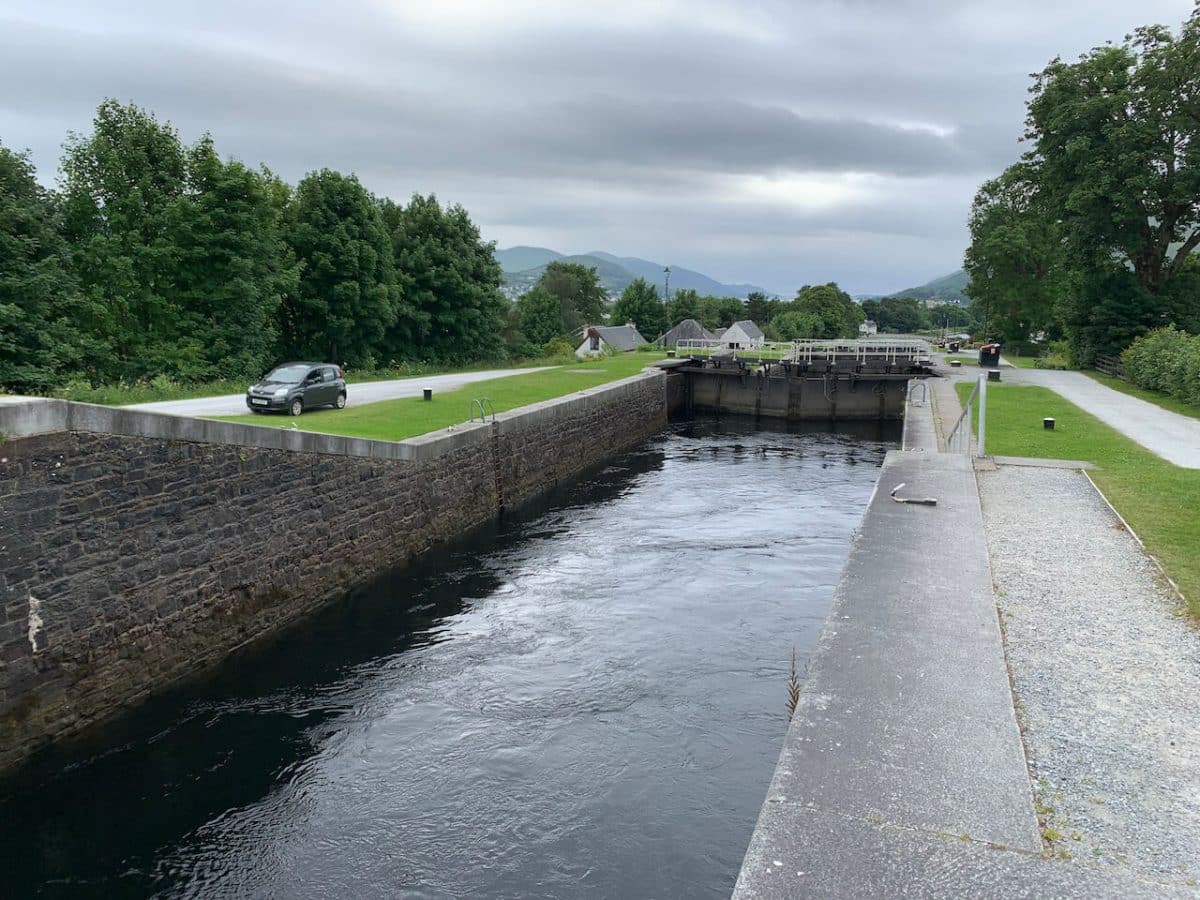
Ben Nevis/cable car
The highest mountain in the UK, Ben Nevis looms dramatically over the town of Fort William – although you need a rare clear day to see the summit!
Climbing the mountain is THE goal for keen amateur mountaineers; if you are heading up, be well prepared as conditions can change quickly and mountain rescue get called out all too often.
For a less risky wait to see the mountain, head to the Nevis Range Mountain Gondola https://www.nevisrange.co.uk/activities/mountain-gondola/, a cable car taking visitors up neighbouring Aonach Mòr Mountain for spectacular views over Ben Nevis itself.
At the top of the gondola, there are plenty of summer walking routes, as well as mountain biking tracks for the more adventurous.
Glenfinnan Viaduct
If you’re a fan of the Harry Potter movies, you will recognise the Glenfinnan Viaduct from scenes of the Hogwarts Express.
The real-life viaduct is located some 25 minutes’ drive from Fort William and is worth a visit. The Jacobite Steam Train https://westcoastrailways.co.uk/jacobite/steam-train-trip crosses the bridge twice a day in each direction; check the website for times. Photographing the train is a popular activity; aim to arrive in the car park around 30-45 minutes beforehand to walk to the viaduct and secure your spot. The best photos of the Glenfinnan train are as it travels southwest from Fort William towards Mallaig.
Once you’ve seen the train, consider the walk up over the hills towards Glenfinnan Station. The Glenfinnan walk includes some long uphill and downhill sections and some clambering over rocks, but is accessible to anyone with a basic level fitness. The views over the viaduct and Loch Shiel more than make up for the effort.
Stop in at the Glenfinnan Station museum en route, before ending your visit at the Glenfinnan monument, commemorating Bonnie Prince Charlie and the Jacobite Rising of 1745.
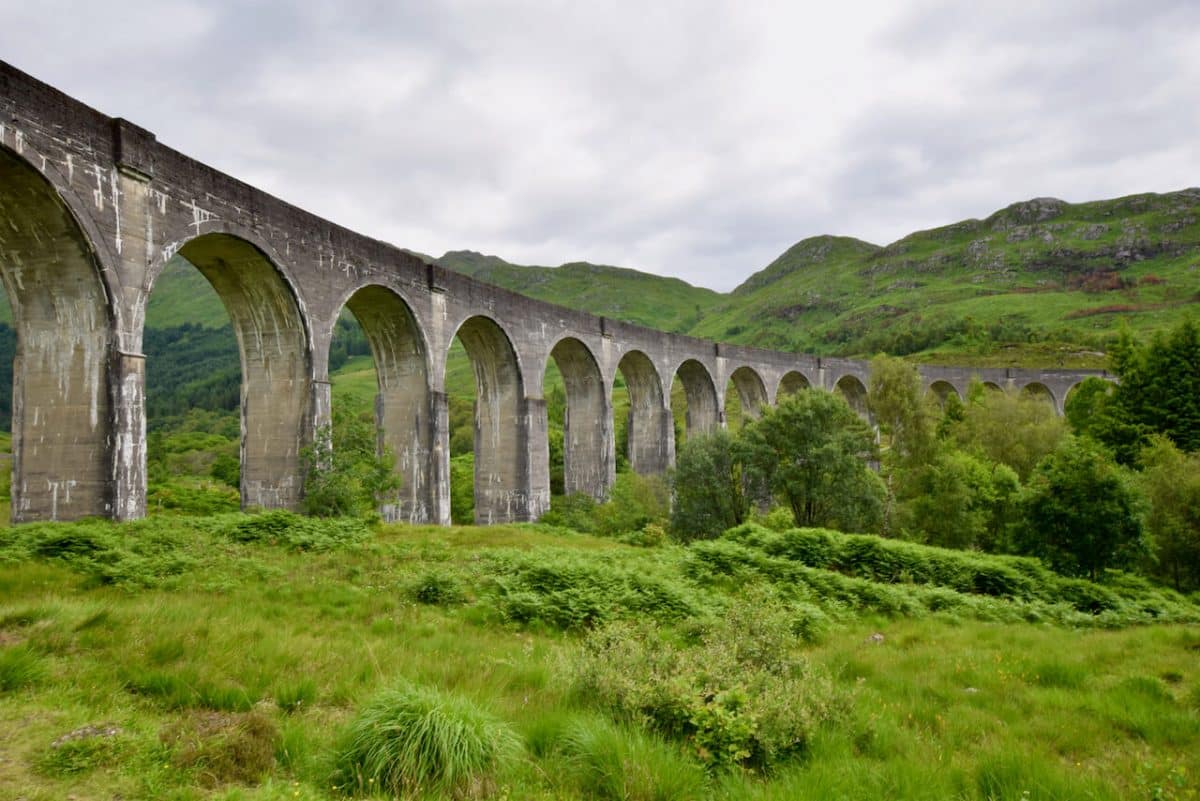
Glencoe
Depending on how you get to the Great Glen, your first glimpse of Glencoe could be on the drive north to Fort William, a short 30-minute drive away.
Glencoe is nothing short of breathtaking. This spectacular glacial valley, around 8 miles (12.5km) long, is a romantic sweep of lush green plans banked on either side by forested mountains and woodlands. Glencoe is also a place of history and tragedy; the Massacre of Glencoe in 1692, where some 30 members of the Macdonald Clan were betrayed and slaughtered by Scottish government forces, is one of the most notorious tales of this often violent region.
You can drive the length of Glencoe on the main road; regular parking areas give plenty of opportunity to stop and explore on foot. Check out the visitor centre at the northern end of the Glen for displays on the geology of the area, as well as the work of the mountain rescue team who work hard to protect the area. The visitor centre is also a good place to pick up information on walking routes in the area.
The Great Glen Way
If you are feeling energetic, the Great Glen Way https://www.walkhighlands.co.uk/great-glen-way.shtml stretches 80 miles (125km) along the length of the Glen from Fort William to Inverness, and takes 5-7 days to walk.
The challenge of walking the Great Glen Way is primarily its length; the walk itself is mostly fairly straightforward, although one or two sections are a little steeper.
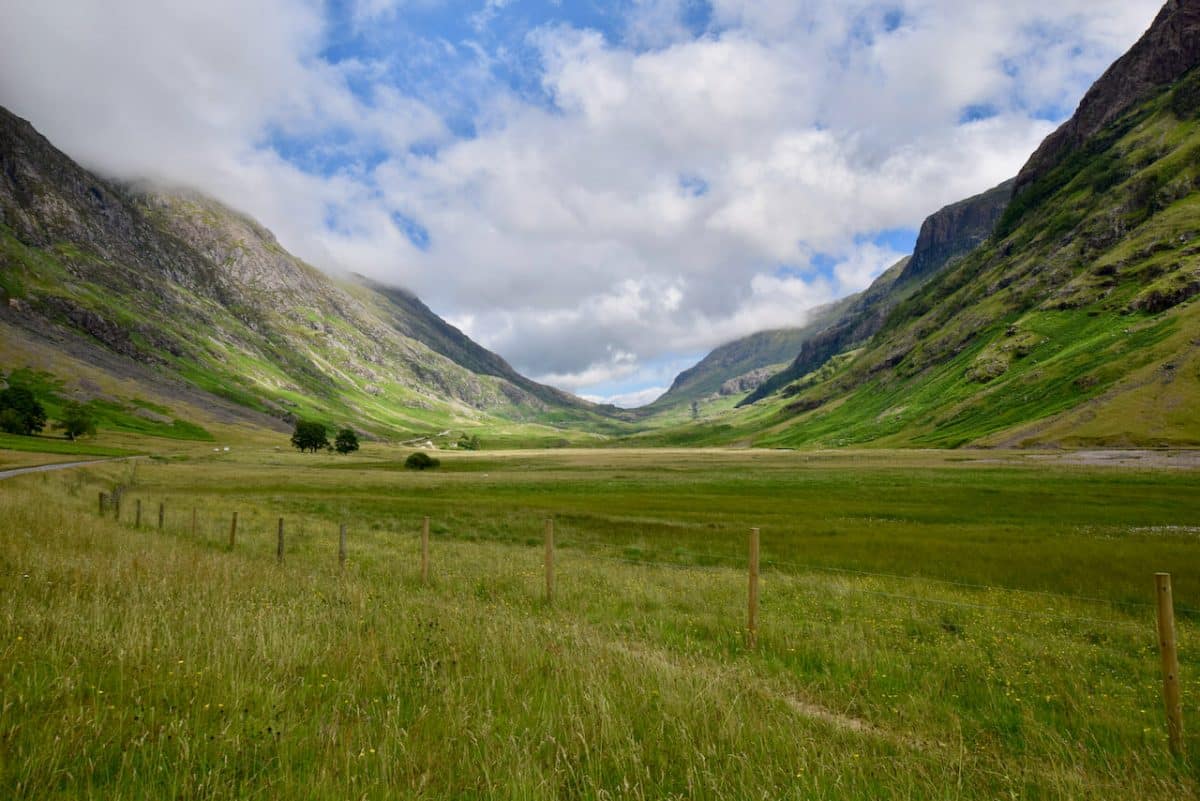
How to get to the Great Glen
Getting to the Great Glen requires some stamina – but the remoteness is part of the charm!
Driving time from Glasgow and Edinburgh is around 3-4 hours depending on where you are headed. There is also a small airport at Inverness.
Both Inverness and Fort William can be reached by rail, but you will need a car to get around once you arrive.
Where to stay in the Great Glen
The Great Glen isn’t short of accommodation, from campsites and hostels to B&B and larger hotels (although there are no chain hotels outside Inverness).
I stayed at Faebuie Cottages http://www.faebuie.co.uk/ in Glenmoriston, which is a little out of the way but provides high-quality, peaceful self-catering accommodation with lovely views.
If you want to be closer to the action, popular hubs are Drumnadrochit, Fort Augustus and Fort William.
Where to eat in the Scottish Highlands
You will find restaurants and cafés all along the Great Glen, so finding somewhere to eat is not a problem!
I can personally recommend the Loch Ness Inn http://www.staylochness.co.uk/ in Drumnadrochit, and the Cluanie Inn https://blacksheephotels.com/cluanie-inn-home/ on the road out to Skye.
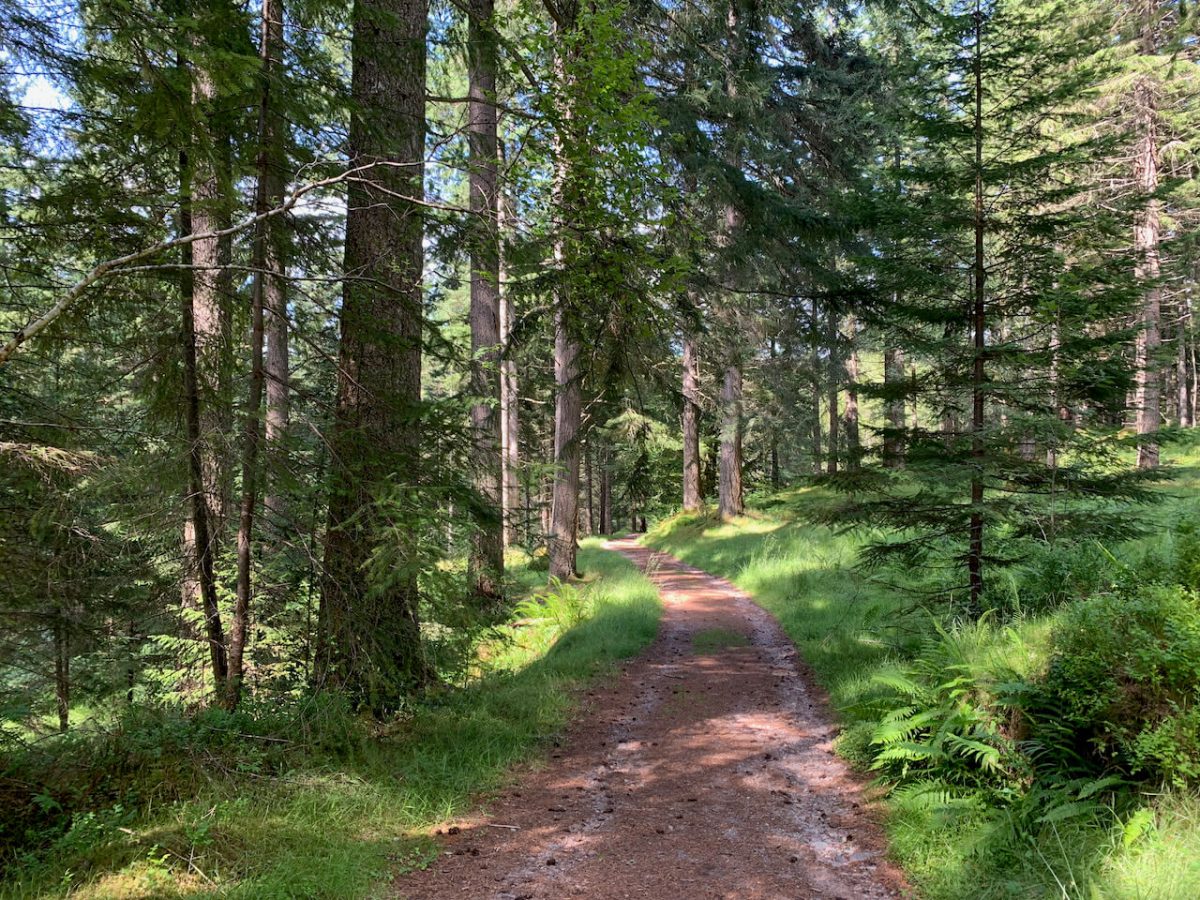
Services in the Scottish Highlands
Fuel
The Scottish Highlands are remote, and driving distances can be a lot further than they look on the map. Never let your fuel tank get too low, and fuel up in plenty of time as petrol stations can be far apart; expect prices to be significantly higher than normal due to the remote location. For more reasonably-priced fuel, fill up in Fort William or Inverness if you are passing through.
Mobile phone signal
Again, due to the remote location, you may find that you do not always have phone signal. Although 3G is available in most places 4G is patchy outside of Fort William and Inverness, so don’t rely entirely on mobile internet to get about. I recommend maps.me as a great offline map and GPS solution while you’re in the Highlands.
Accommodation and restaurants/coffee shops almost always offer free wifi; ask for the password. Don’t expect lightning speeds, as they are working off the same network constraints as everyone else in the area.
Supermarkets
There are supermarkets in Fort William and Inverness; elsewhere, you will be relying on minimarts and local grocery stores and farm shops.
Map of the Great Glen
Travelling to beautiful and historic Scotland? Check out my other posts!
- Explore the Scottish Highlands: Things to do in the Great Glen
- Everything you need to know if you’re planning a trip to Scotland
- Getting around the Hebrides: How to use the ferries in Scotland
- Secret Britain: 7 home-grown destinations Brits love!

